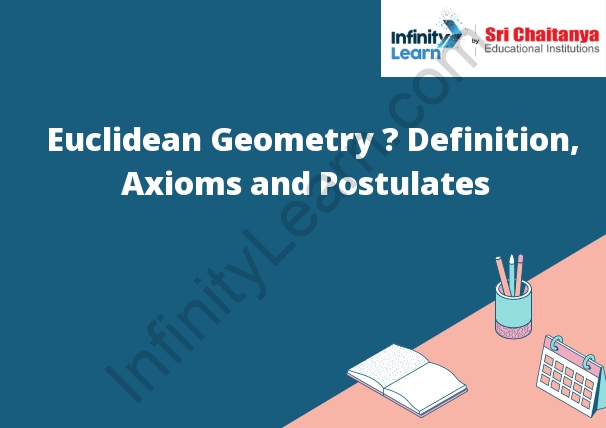Table of Contents
Euclidean Geometry Definition
In Euclidean geometry, points are considered to be the simplest objects in space. Lines are created by connecting two points, and planes are created by connecting three points. All objects in Euclidean geometry are assumed to be flat, and distances between points are measured using a straight line.

What is Euclidean Geometry?
Euclidean geometry is a branch of mathematics that deals with the properties of geometric shapes that are in a flat or two-dimensional space. It is named after the Greek mathematician Euclid, who wrote the Elements, a treatise on geometry that is widely considered to be the foundation of the subject.
Elements of Euclidean Geometry
Euclidean geometry is a branch of mathematics focused on the study of points, lines, angles, and shapes in a two-dimensional space. It is the oldest form of geometry, and the most well-known. Euclidean geometry is based on a set of five postulates, or basic rules, that can be used to construct geometric shapes and proofs.
The first postulate states that a point is a location in space with no size or shape. The second postulate states that a line is a straight, continuous path between two points. The third postulate states that a angle is formed by two lines intersecting at a point, and that the angle is measured by the size of the opening between the lines. The fourth postulate states that a shape can be built by putting together a finite number of points, lines, and angles. The fifth and final postulate states that if a shape can be constructed using the first four postulates, then it is possible to draw a line through any two points in the shape that is perpendicular to the line connecting the points.
Euclidean geometry is the basis for plane geometry, which is the study of shapes that exist in a two-dimensional space. Plane geometry is the foundation for all other types of geometry, including spherical geometry, which deals with shapes that exist in three-dimensional space, and hyperbolic geometry, which deals with shapes that exist in four or more dimensions.
Euclid Geometry Postulates:
1. A point is a location in space.
2. A line is a straight path between two points.
3. A plane is a flat surface that extends in all directions.
4. A right angle is an angle of 90 degrees.
5. Parallel lines never intersect.
6. If two lines are parallel, then the angles between them are always the same.
Euclid’s Postulate No 1
A straight line can be drawn from any point to any other point.
Euclid’s Postulate No 2
If a line segment joining two points is extended, the sum of the two interior angles on the extended line is two right angles.
In other words, if you have a line that goes from one point to another, and you keep going that line, the two angles at the end of the line (not the line itself, but the angles at the endpoints of the line) will add up to 180 degrees.
Euclid’s Postulate No 3
Given a line and a point not on the line, there exists one and only one line through the point that is parallel to the given line.
Euclid’s Postulate No 4
A straight line segment can be extended indefinitely in a straight line.
Proof
Given: A line segment AB
To prove: A line segment can be extended indefinitely in a straight line
Proof:
We will use the construction method of proof.
Draw a line segment BC perpendicular to AB.
Extend BC indefinitely.
Since BC is a line segment, it will continue to be a line segment when extended.
Thus, the line segment AB can be extended indefinitely in a straight line.
Euclid’s Postulate No 5
If two lines intersect a third line in such a way that the sum of the inner angles on one side is less than two right angles, then the two lines will eventually meet on that side.
Questions to be Solved:
1. How does the author feel about the death of his father?
2. How does the author’s relationship with his father change after the death?
1. The author feels sad and empty after the death of his father.
2. The author’s relationship with his father changes from one of dependence to one of independence.








